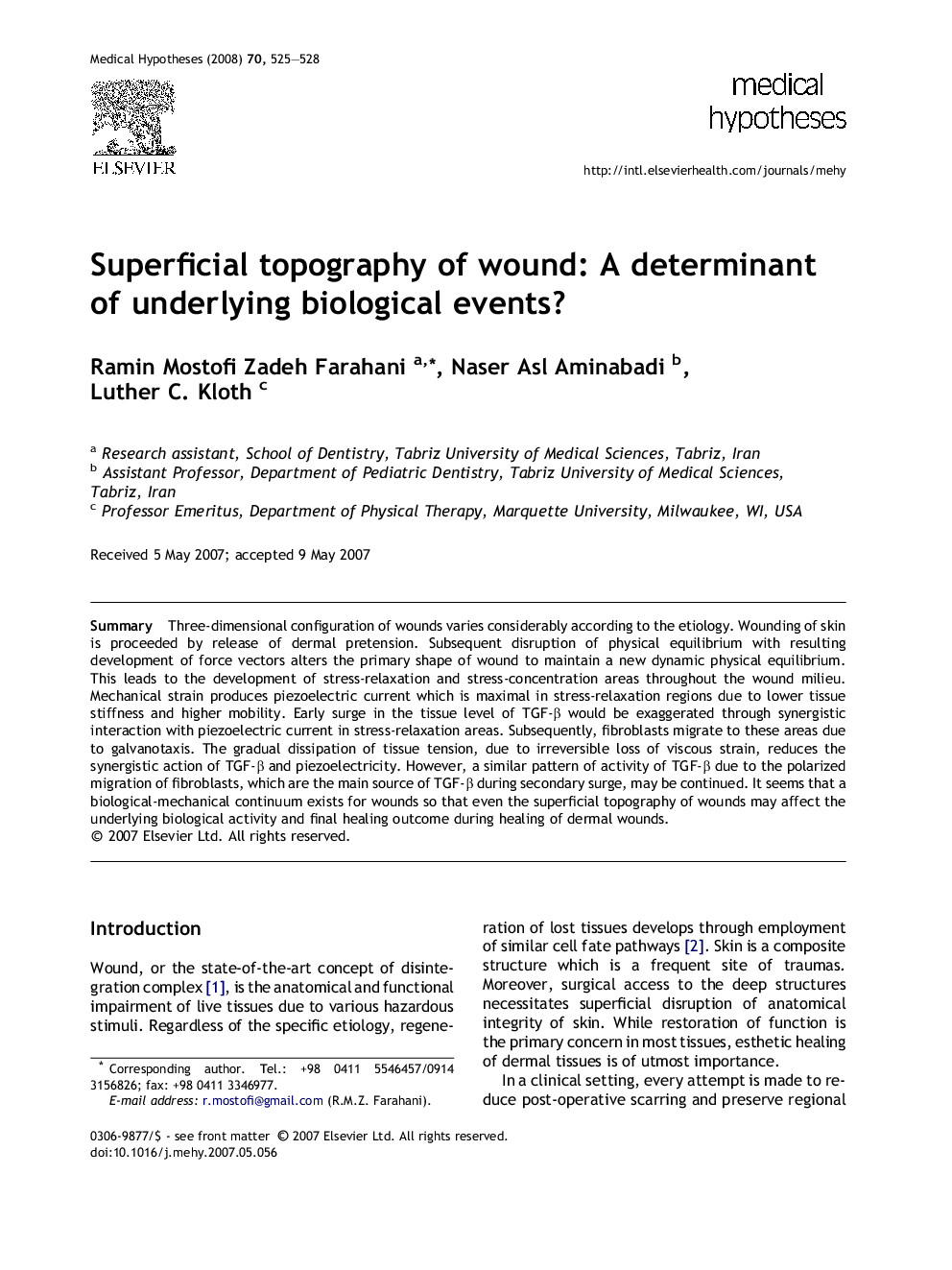| Article ID | Journal | Published Year | Pages | File Type |
|---|---|---|---|---|
| 2491054 | Medical Hypotheses | 2008 | 4 Pages |
SummaryThree-dimensional configuration of wounds varies considerably according to the etiology. Wounding of skin is proceeded by release of dermal pretension. Subsequent disruption of physical equilibrium with resulting development of force vectors alters the primary shape of wound to maintain a new dynamic physical equilibrium. This leads to the development of stress-relaxation and stress-concentration areas throughout the wound milieu. Mechanical strain produces piezoelectric current which is maximal in stress-relaxation regions due to lower tissue stiffness and higher mobility. Early surge in the tissue level of TGF-β would be exaggerated through synergistic interaction with piezoelectric current in stress-relaxation areas. Subsequently, fibroblasts migrate to these areas due to galvanotaxis. The gradual dissipation of tissue tension, due to irreversible loss of viscous strain, reduces the synergistic action of TGF-β and piezoelectricity. However, a similar pattern of activity of TGF-β due to the polarized migration of fibroblasts, which are the main source of TGF-β during secondary surge, may be continued. It seems that a biological-mechanical continuum exists for wounds so that even the superficial topography of wounds may affect the underlying biological activity and final healing outcome during healing of dermal wounds.
